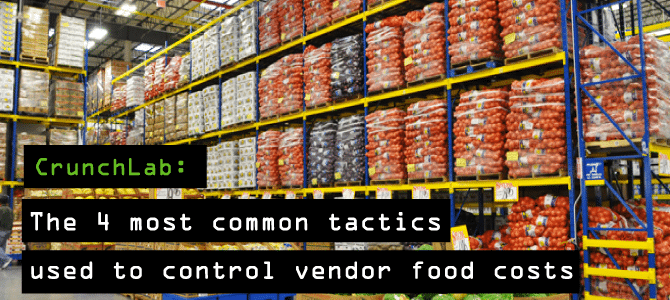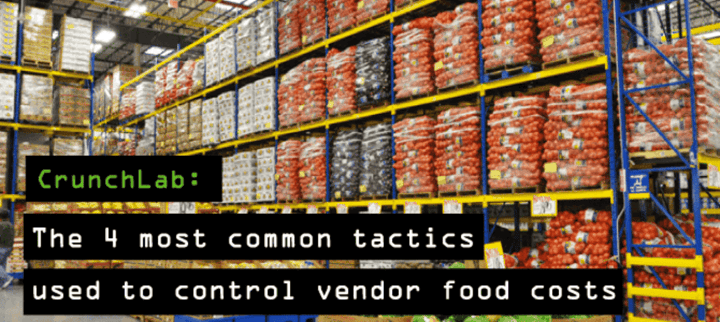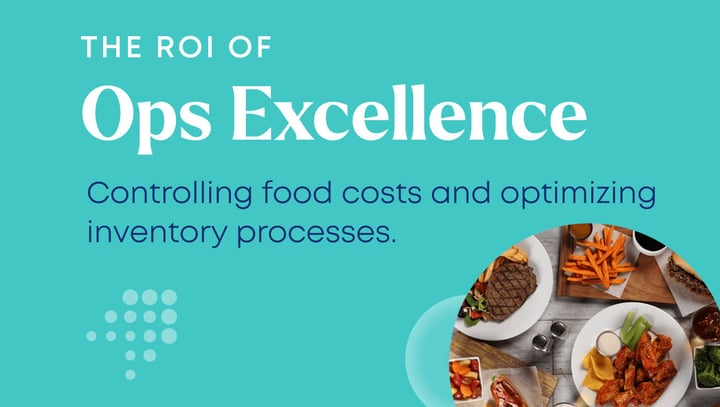Restaurant chains typically use one of four tactics to deal with vendor product price management to control their food costs.
According to the Economic Research Service arm of the USDA, the retail food industry has changed significantly over the past 2 decades, as warehouse club stores, drugstores, and other nontraditional food stores have increased their share of food sales. Rapid changes in consumer food choices are reflected in food retailing, including the introduction of new products to meet new consumer demands. As such, the restaurant food distribution industry is hyper-competitive with prices ebbing and flowing to the current market conditions.
Food service vendors, just like the restaurant businesses they supply, are operating on very slim profit margins. So, when every dollar counts toward your bottom line, it’s a daunting task to monitor all your vendor’s prices when they seem to be constantly changing. When it’s very common for an invoice to show a price that’s above (or below) the contracted price, a restaurant operation has to have a vendor management strategy in place to keep costs in line with expectations.
Tactics: You have some options
Multi-unit restaurant chains commonly deploy one of four tactics to deal with their vendor product price management strategy.
Here they are:
1. The accounting and finance team will routinely manually compare your actual vendor invoice prices to the contracted prices
2. Individual restaurant managers will routinely double-check invoice prices against a current vendor price sheet that your home office provides on a routine basis
3. Restaurant management software such as a back office system is used to automate contract-to-invoice price comparisons, generate alerts and remediate the cost discrepancies
4. Let it ride and cross your fingers and hope for the best (this happens more than you’d think)
Option 1: Home office accounting teams
The first option relies heavily on your office team talent. When there’s enough quality finance and bookkeeping talent in the office this option can work well. Although it can be expensive to maintain consistently, the savings reaped from finding significant invoice discrepancies often make it worthwhile. However, this option also leaves a lot of room for human error. Often those errors are repeated over and over again because the people leading the job don’t follow a best practice procedure.
Option 2: Restaurant-level checking
The second option puts a knowledgeable manager to work doing a purely mechanical task. This option will often suffer from human errors, too, and success varies greatly from location to location. Sometimes it works great and sometimes it doesn’t. What’s more, a manager’s time might be better spent circulating through the restaurant, improving food production operations, reducing waste, and training people.
Option 3: Automated back office software
The third option is highly efficient, though it requires an expert implementation of a restaurant back office software system. These restaurant systems drive down food costs materially simply by comparing what the restaurant should be paying for food products and supplies versus what it actually is paying for them. When a discrepancy is found, an alert is generated and both parties are notified for reconciliation. A restaurant back office solution does this with aplomb. While return on investment for an integrated back office system can be outstanding, typically adding 2-5% of food sales to bottom-line profits, this tactic requires a strategy that focuses on a commitment to operational excellence from the entire restaurant chain, top-to-bottom.
Option 4: Fly blind
Never cross your fingers and just hope for the best! Come on, you’re a professional operation and you have better options!
Reliability is key
Finally, whichever method your operation prefers (except #4!), it’s important that it’s performed for every vendor order, every day. As with so many things, getting the basics right day after day is the key to better restaurant food cost management.
Each year operators save tens of thousands of dollars by finding and reconciling vendor price discrepancies using an integrated cloud-based back office solution. If you want to learn more about how we can help your operation get vendor prices under control, plus a whole lot more, contact us to request an online demonstration.




